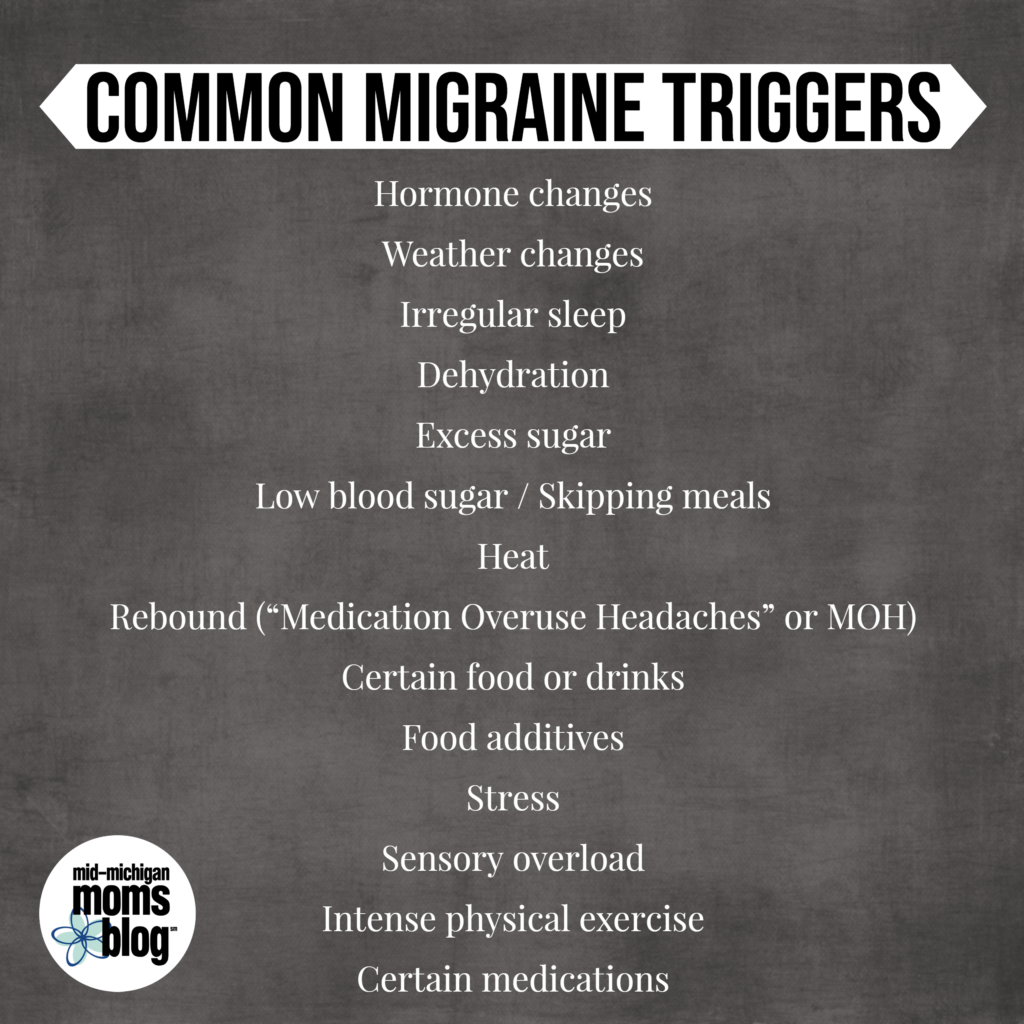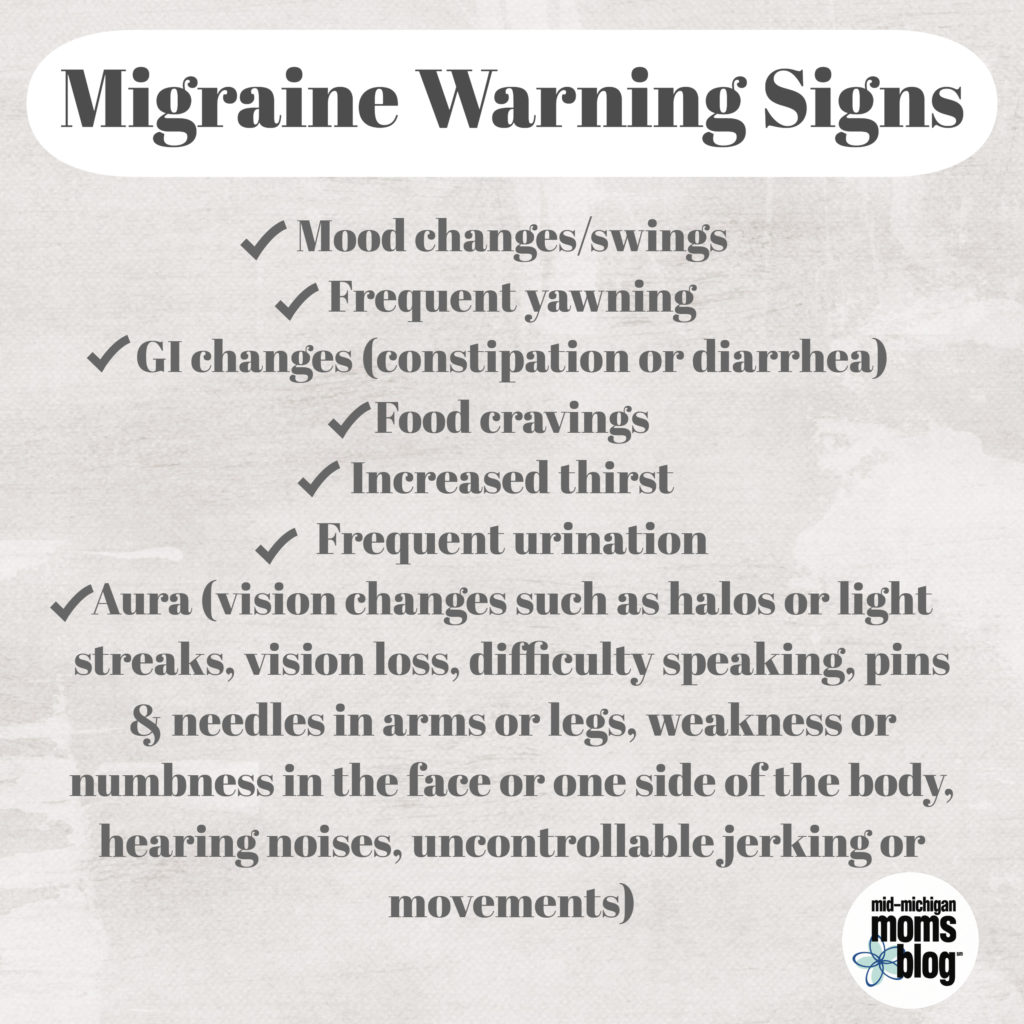If you’ve experienced a migraine or have been diagnosed with chronic migraine, you know that it can seem like a never-ending battle to try to prevent and cope. I’ve witnessed both friends and family fight this debilitating disease. My friend Tori McGuire was diagnosed with chronic migraine in 2018. Since June is National Headache and Migraine Awareness Month, I’ve asked her to share her wealth of knowledge and advice on how to recognize, cope with, and even prevent migraines.

Recognizing individual triggers is one of the first steps to treatment.
Triggers are different for everyone. People typically experience a migraine when more than one trigger occurs at the same time. If you are experiencing migraines, keeping track of your health and environment leading up to the attack can help you and your doctor identify your personal triggers.
Of course, avoiding triggers will help prevent migraine, however, you won’t always be able to. Heck, I’d even go as far as saying a pregnant woman or new mother experiences more than half of that list on a daily basis! Once triggered, most people experience one or more warning signs anywhere from 30-minutes to 48-hours before an attack. Some don’t experience any.
Although unpleasant, these warning signs are a blessing in disguise allowing you to take action to minimize or stop the migraine altogether.
If you’re experiencing a migraine, here are Tori’s top suggestions for relief and comfort:
Long-term prevention for migraines varies from person to person.
While one method may work for some, for others that same method may make their migraines worse. Keeping a log of your triggers, warning signs, treatments, and migraine characteristics will help you and your doctor determine what might work best for you. Tori has tried quite a few different preventative options and wanted to share her personal feedback on each one, but of course, you should discuss your options with your physician before trying anything.
Diet Changes
- Cutting out specific foods or food groups that are triggers can help prevent migraines. Some people recommend a Paleo Diet or Keto Diet because of its low sugar content. Tori found this only worked for her as an occasional “reset” when her attacks were getting uncontrollable but didn’t follow the diets long term.
Blood Pressure Medication
- Though this is typically prescribed for its intended use, it can also be used as a preventative treatment for migraines and is often one of the first preventatives prescribed by a primary doctor as it’s relatively safe with few side effects. Its main purpose is to lower blood pressure, but in Tori’s case it went too low making her feel faint and dizzy, so it didn’t help her migraines.
Botox
- A total of 30-32 small injections in and around the face, head, and neck that can numb the nerves that cause migraine pain. Each set of injections or “cycle” typically lasts three months. It seemed to make Tori’s migraines worse, causing neck weakness {a common side effect}. Its recommended you try two three month cycles before deciding if it works for you or not.
Combo Birth Control
- Trying this method made my friend’s migraines much worse, which isn’t surprising since hormone changes is one of her triggers.
Pregnancy vs. Migraines
Speaking of hormonal changes, pregnancy can throw a woman’s body completely out of whack, therefore affecting the likelihood of a migraine. For me, personally, I didn’t start having migraines until I got pregnant and now experience them before, during, and after my menstrual cycle. In Tori’s case, they have been on and off during her current pregnancy thus far. The decision of whether or not to use certain medications during pregnancy has been a very difficult one for her. Active studies cannot be performed regarding triptans during pregnancy {for ethical reasons}, however, retrospective research has not found them to lead to birth complications.
Tori urges fellow migraine sufferers to prayerfully consider the best option for themselves and their babies while also discussing it with their doctors.
My friend is dedicated to sharing her journey navigating day-to-day life as a wife, mother, and nurse while managing migraines. Follow her journey via Instagram: @torimcguireblog or visit her website: www.torimcguire.com. She also recommends following these two other Instagram accounts for more inspiration and information: @mindfulmigraine and @the_migraine_life.

















